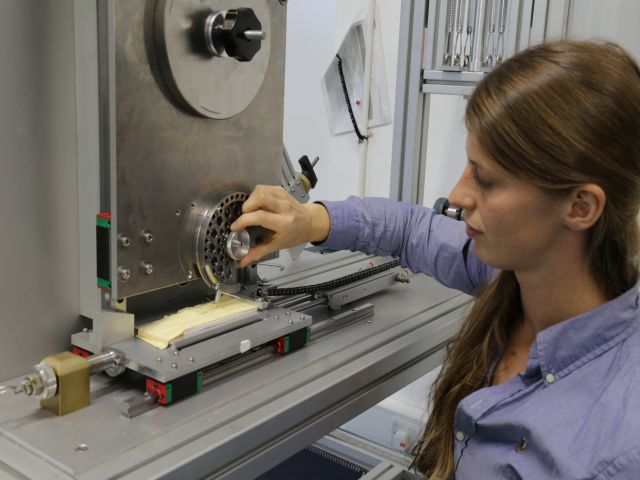With a growth in Sports Engineering and Sports Technology prevalence, industry and courses across the globe, we often find the two terms are used interchangeably. But they are different things… and how do they relate to Sports Science?
Sports Engineering
Sports engineering is the application of math, science and engineering principles and techniques to the design, development, and optimisation of external factors that contribute to the performance, safety, and overall experience of athletes, coaches, and spectators (1), such as sports equipment, technologies, facilities, regulatory standards and performance analysis. It encompasses a wide range of disciplines, including – but not limited to:
- Design: Engineers work on designing sports equipment, such as tennis rackets, golf clubs, and helmets, to maximize performance and safety.
- Biomechanics: The study of human movement and body mechanics is essential for improving an athlete’s technique and reducing the risk of injury.
- Aerodynamics: Engineers apply principles of aerodynamics to optimize the design of equipment used in sports like cycling, swimming, and skiing to reduce drag and enhance performance.
- Materials Science: The development of advanced materials and composites is crucial for creating lightweight and durable sports equipment.
- Environment Design: Sports engineers design and optimize sports venues to improve the fan experience and provide a competitive advantage for athletes.
- Technology: The design and development electronic devices, software, data analytics, and sensors.
This is something we have covered previously in more detail within this blog article.
Sports Technology
Sports Engineering differs to Sports Technology, sometimes referred to as ‘Sports Tech’, on account of its focus on problem solving, as opposed to application or use to improve and enhance various aspects of sports. Key components of Sports Technology include:
- Performance Tracking and Analysis: Advanced sensors, GPS technology, and wearables are used to monitor and analyze athletes’ movements, performance metrics, and physiological data. This information helps coaches and athletes make data-driven decisions to optimize training and performance.
- Biomechanics: High-speed cameras, motion capture systems, and 3D analysis tools are employed to study and improve the biomechanics of athletes. This technology provides insights into body movements, joint angles, and forces acting on the body during sports activities.
- Equipment Innovation: Sports technology has led to the development of high-performance equipment, such as advanced materials for sports gear, aerodynamically optimized equipment, and smart equipment embedded with sensors for real-time feedback.
- Virtual Reality (VR) and Augmented Reality (AR): VR and AR technologies are being used in sports training to create immersive and realistic simulation environments. Athletes can practice and refine their skills in virtual scenarios, and AR is used to enhance the viewing experience for spectators.
- Data Analytics: Big data analytics and machine learning are employed to process vast amounts of data generated during sports events. This data analysis helps teams and coaches make informed decisions about strategy, player performance, and opponent analysis.
- Fan Engagement: Sports technology has transformed the way fans engage with their favorite sports. Virtual and augmented reality experiences, social media integration, and interactive apps provide fans with a more immersive and personalized experience.
- Health and Injury Prevention: Sports tech plays a crucial role in athlete health and injury prevention. Monitoring systems can track an athlete’s physical condition, detect early signs of fatigue or injury risk, and aid in developing personalized injury prevention strategies.
- Broadcasting Technology: High-definition cameras, instant replay systems, and other broadcasting technologies enhance the viewing experience for fans. The use of technology in broadcasting has also led to innovations such as player and ball tracking, enhancing the analysis and commentary of games.
Sports Science
And just make it a little more complicated … how does all this relate to Sports Science? Well, Sports Engineering differs to Sports Science on account of its focus on the external, as opposed to the internal (physiology) factors influence performance (1). Key components of Sports Science include:
- Exercise Physiology: Examines how the body responds and adapts to physical activity, including the study of cardiovascular and respiratory systems, metabolism, and energy production during exercise.
- Biomechanics: Analyses the mechanics of human movement, including the study of forces, motion, and the structure and function of the body’s musculoskeletal system.
- Sports Psychology: Focuses on the psychological factors that influence sports performance, including motivation, concentration, goal-setting, stress management, and mental toughness.
- Nutrition: Studies the impact of diet on athletic performance, recovery, and overall health. This includes the optimization of nutrient intake for energy, endurance, and recovery.
- Sports Medicine: Deals with the prevention, diagnosis, and treatment of sports-related injuries. It also involves rehabilitation and recovery strategies to help athletes return to competition safely.
- Strength and Conditioning: Involves designing and implementing training programs to enhance physical fitness, strength, power, and agility specific to the demands of a particular sport.
Inevitably, for each field there are overlaps with other disciplines which continues to evolve and develop – so lets not try to get too hung up on what sits where, but lets enjoy the interdisciplinary nature of this field.
If you are interested in pursuing a career in Sports Engineering, we would recommend you check out:
- Our blog article on becoming a Sports Engineer.
- Our blog article on our MSc in Sports Engineering and our course page on the SHU website.
- The International Sports Engineering Association website, whom have an article on how to become a Sports Engineer and a compressive list Sports Engineering education providers globally.
- The publications of the Sports Engineering Journal.
If you have an interest in Sports Technology check out the International Sports Technology Association website, and for Sports Science check out British Association of Sports and Exercise Science (BASES) or the International Society of Biomechanics.
References:


